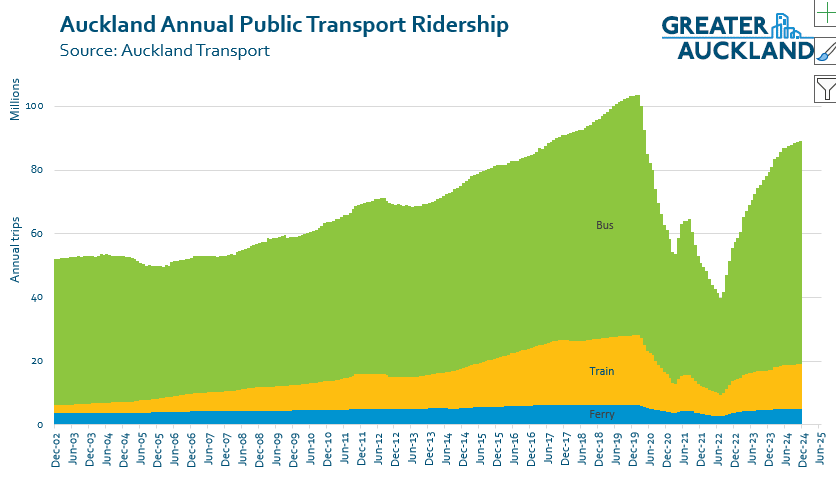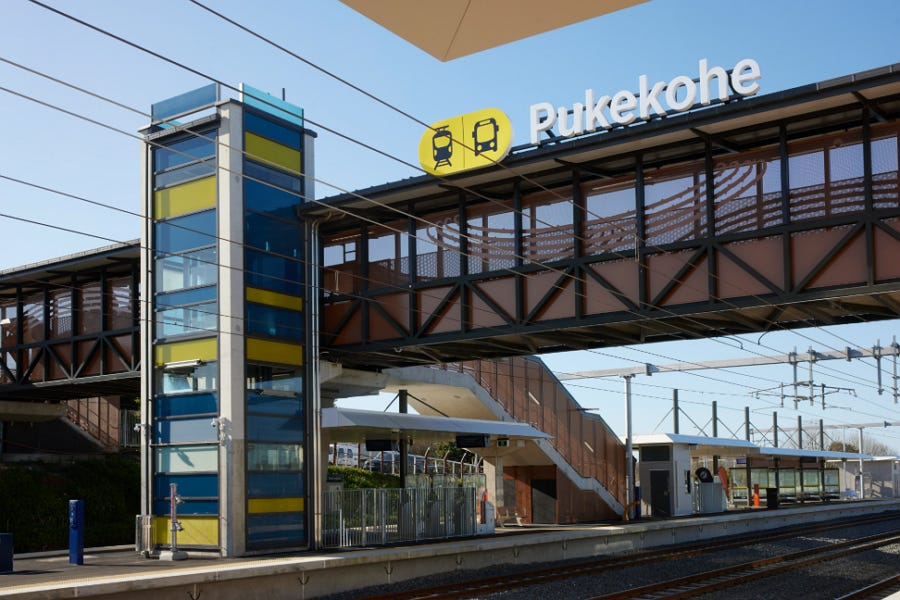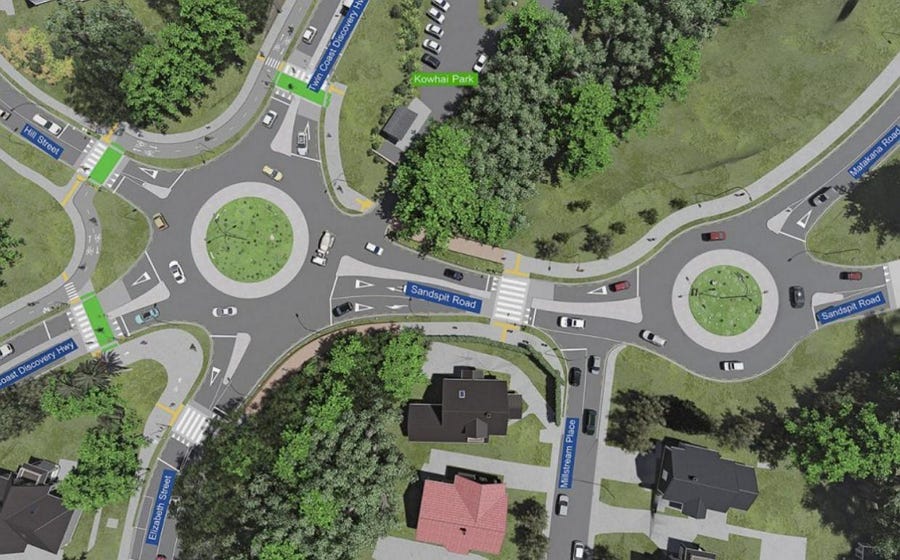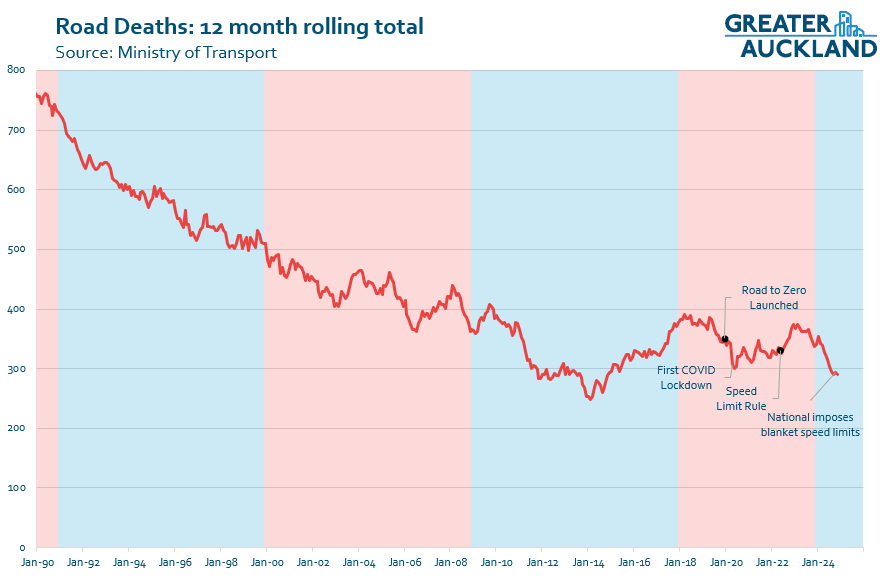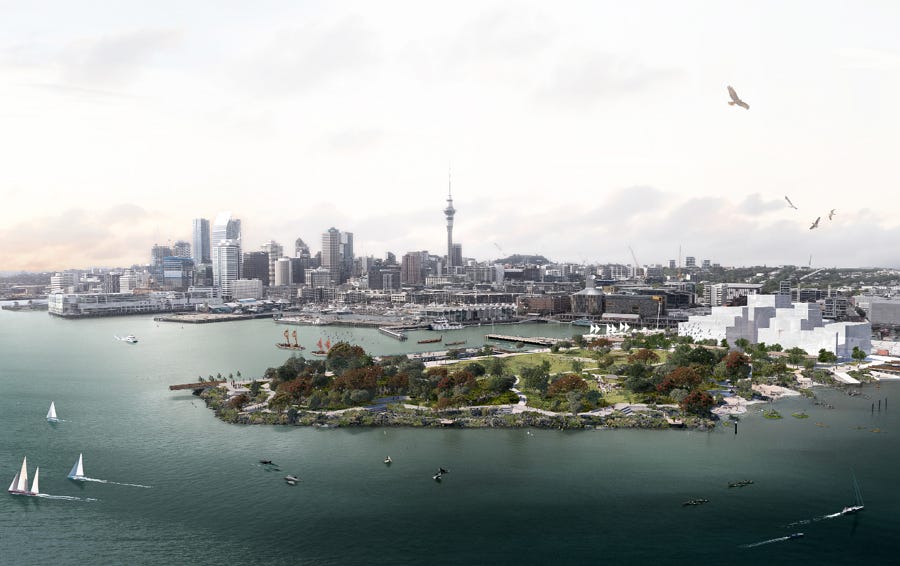Well, it's the last day of the year, so it’s time for a quick wrap-up of the most important things that happened in 2024 for urbanism and transport in our city. A huge thank you to everyone who has visited the blog and supported us in our mission to make a greater Tāmaki Makaurau.
The overarching theme this year has been the flow-on effects from the change in government in late 2023. Transport Minister Simeon Brown has been particularly active, becoming inappropriately involved in hands-on management of the minutest details of projects around the motu - all to fuel his culture war. In many ways, this also become a war on Auckland which risks undermining many of the region's longstanding transport plans and community aspirations.
In tangible terms, this meant the biggest rollback of climate-friendly and badly needed safety projects in Auckland (and the rest of New Zealand), with active modes and public transport falling to the wayside in favour of a push for roads and motorway mega-projects. This, in spite of strong support from local communities for improving access to – and quality of – walking, cycling and public transport. This is reflected in many of the categories below.
Public Transport
Ridership recovery stalls
After the ups and downs of early COVID-19 and the resulting changes in working patterns, the recovery of public transport ridership has continued – but at a much slower pace than we might have hoped. For the 12 months to the end of November, there were just over 89 million boardings in Auckland – compared to 78.2 million for the same period to November 2023.
That's a 13% increase, which is good, but is still 86% of ridership before COVID-19 appeared on the scene.
What concerns me is that we seem to be stuck at about that 86% level. What will it take to see the recovery move into the high 80's or even early 90 per cent range?
Nor has the recovery of public transport usage been evenly spread. Buses are doing the best, sitting at 93%, with ferries at 79%. However, trains are continuing to suffer from ongoing works on the rail network, and due to having more commuter-centric trips focused on the central city. As such, passenger rail ridership is only at 64% of pre-COVID levels.
One piece of good news for ridership is the Western Express, which turned one in November and did so in style. Travel on the WX1 and the other routes in the Northwest have surpassed predictions, with ridership up 45 per cent on what was originally expected by Auckland Transport.
Crosstown Bus Changes
The growth in bus ridership is likely to continue too, as in November AT went live with changes to crosstown bus services, including among other things, breaking up the Outer Link.
Rail upgrades - and faults
The first part of the year saw significant disruption on therail network from regular faults, further dampening trust in a network that was already hurting from years of disruption to get ready for the City Rail Link. Unfortunately, this is likely to continue in the coming year, with Kiwirail talking about needing to complete a decade worth's of work in 18 months.
The City Rail Link continues to make progress, with tunnels and stations almost ready for the first test train - that was originally meant to be running this year, but will now be done early 2025.
The Papakura to Pukekohe electrification was completed this year but, as I predicted at the start of the year, trains haven't started using it yet. This is because Kiwirail then decided to undertake the Rail Network Rebuild for this section of the network - something they surely should have done during the two years the line was closed. In turn, this means electric passenger trains won't start running to Pukekohe till early February.
Farebox recovery policies
Late in the year, the government suggested new targets for the percentage of PT costs covered by passenger fares, which could see fares in some regions increase by up to 70% (or significant cuts to services to make up the gap).
Announced prior to this were Auckland's 2025 PT fare increases, which will see fares rise by an average of 5.2%. This comes into effect from February 9.
Long awaited HOP upgrade - pay as you go
In November 2024, AT finally launched the ability to tag on to public transport directly with a credit/debit card – which has already been popular.
A rough year for active modes - the war on the most economical ways of getting around
It's been a very challenging year for active modes. The self-described "back to basics" government, helped by major media outlets, ran with a full-frontal assault on the kinds of infrastructure that makes life better for those not in cars (and those in cars too).
In particular, the minister has cavalierly slashed funding for safe and connected bike networks, crossings that are better for all ages and abilities, bus shelters and pavement improvements and multi-modal street improvements that enable more people to use more kinds of transport without adding to congestion.
Still, some progress has been made, especially in the Inner West where the Pt Chevalier to Westmere improvements are really starting to come together and are looking fantastic – some of the "after" images look like computer-generated renders! We also have confirmation, finally, that the Great North Rd improvements will start soon too.
And, Auckland Transport has some other projects on the go, including tactical cycleways in Māngere West and road renewals through Grey Lynn, that will help fill existing gaps and deliver on local wishes. The real legacy of Simeon Brown's smackdown on kid-friendly infrastructure willl become clearer as the current pipeline runs out.
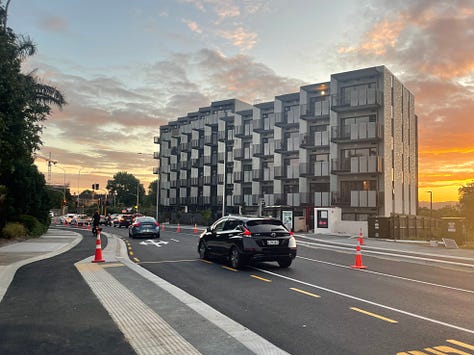
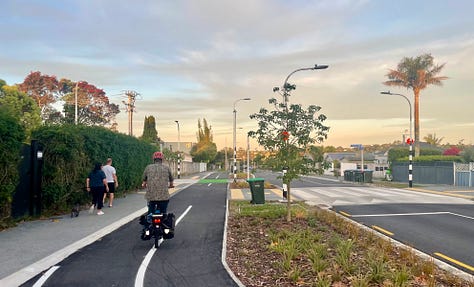

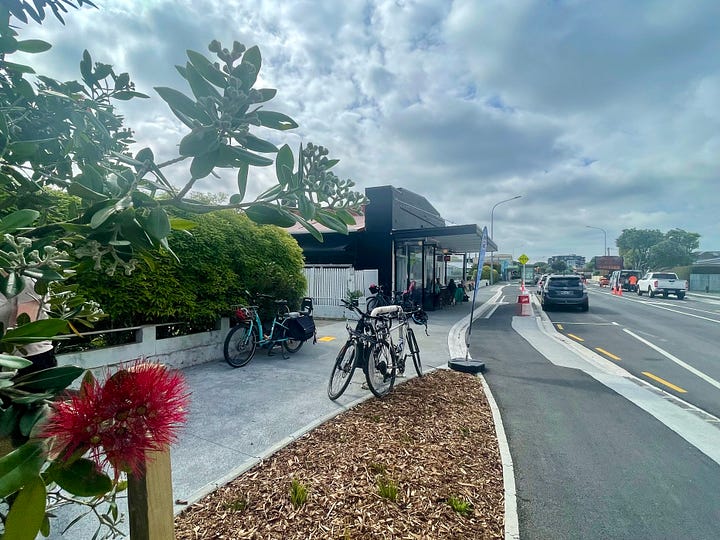

Roads
RoNS
The government's official transport policy has focused much of the attention and funding towards a bunch of massive mega-motorway projects. It remains to be seen how they'll be able to afford them all, especially in light of the most recent costings which are billions more than National had planned for.
Tolling and Congestion Pricing
Late in the year, the government announced that three roads under construction (or about to begin) would become toll roads. These are:
Penlink (reconfirming the previous government's decision)
Takitimu North Link in Tauranga
and Ōtaki to north of Levin.
However, far from being a big source of funding, the tolls are only likely to cover a very small percentage of the overall cost of these projects.
Government also announced that congestion pricing would progress – but with central government leading the design and having control over the system. While confirmation it will happen is good, the changes also feel like a delaying tactic to push out any implementation until after the next election.
Safe Speed Reversals
Minister of Transport Simeon Brown charged ahead with his dream of reversing the widespread programme of nuanced, locally led and evidence-based speed limit changes. He did so despite massive – and high-profile – pushback from international experts, local authorities, and communities around the motu.
It has been a national shame to see politicians caring more about drumming up culture war issues than the outcomes for the people whose wellbeing they're charged with. Expect to see the road toll begin to creep back up in the next few years, with each and every injury or fatality likely to be put at the feet of this government and this Transport Minister.
Safety
Coupled with his blanket top-down increase in speed limits (which included ruling out 30 km/h as an available speed for cities, contrary to all best practice and international trends), Simeon Brown has gone after highly local safe infrastructure, like speed bumps, raised crossings, and bike lanes. With lethal precision, he has halted projects in their tracks and directly attacked these specific elements. This is regardless of what local communities want - including National voter strongholds, as for example the infamous Hill Street intersection in Warkworth.
The impacts of the previous government's focus on safety, including safer speed limits, was just starting to bear fruit too, with the number of deaths on our roads dropping significantly in 2024 compared to recent years. We are likely to end the year with fewer than 300 deaths for the first time since 2014.
Other Stuff
Auckland Transport to change (as we know it)
Earlier this month the government announced that Auckland Transport would be split up with the planning and policy functions shifting to Auckland Council as well as a few other changes. This is something that will play out throughout 2025 as the government pass this through legislation and we learn the final form of the transport landscape in the region.
Building Consents
The number of building consents issued in Auckland continued to fall throughout most 2024 as the economy weakened and the government stopped most of Kainga Ora's building programme. There was a slight upwards tick in the last few months but it remains to be seen if this is the start of a new trend or just a bump along the way.
Stadium Debate
The latest iteration of the debate around a new stadium in Auckland continued though 2024 and the council narrowed the options in their current bid process down to just two, an upgraded Eden Park and Te Tōangaroa, a new station above Quay Park. Both proposals are currently going though feasibility studies and we're likely to hear a lot more about them in 2025.
Wynyard Peninsula
The concept plans were released for Te Ara Tukutuku, the headland park planned for the northern end of Wynyard Point and they look fantastic.
Top Read Posts
It's been another big year with over 200 posts published thanks to a variety of contributors. Here are our top 10 most viewed posts for the year. The top thee are also our top three most viewed posts of all time with the first one having more than double the number of views of number 2 on the list.
There’s so much more we could have included here. What were your local highlights of 2024?
Finally, while this year has been a bit of a handbrake for good urban and transport policy in Auckland, it's also true we are seeing the real tangible benefits of the progress our city has made over the long term. Government's and policies come and go, but a vision of a greater Auckland endures - and so onwards we go into 2025.
This will be our last post for the year, so once again thanks for reading and supporting us. Meri Kirihimete, have a happy and safe break, and best wishes for the New Year.



